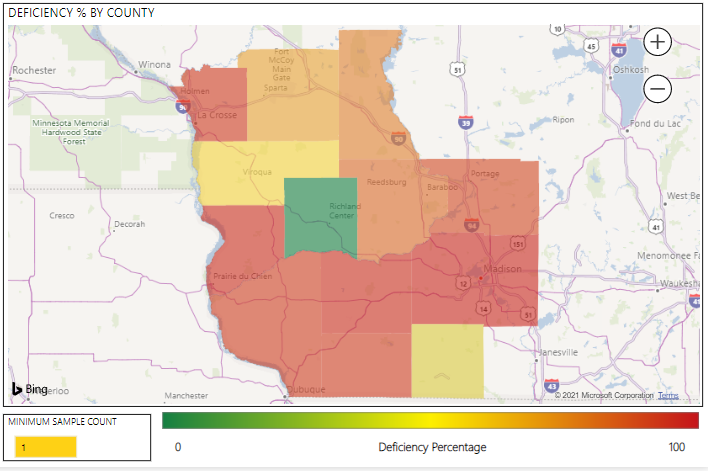Prioritizing Micronutrients
With corn, there are three micronutrients I encourage you to focus on. The first is zinc, which is commonly one of the most deficient micronutrients in corn. Zinc is immobile in soil and tissue, so it’s critical that plants have a constant supply throughout the season to meet growth and development needs. In addition to a seed treatment, you can boost early-season zinc levels with a starter fertilizer. You can often tank mix zinc products with a postemergence herbicide application to address substantial crop needs from V5 to V8.
Prioritize zinc, manganese and boron in corn
Look at different micronutrient options and choose formulations that are more efficient for plant uptake. A micronutrient option such as MAX-IN
® Zinc with CornSorb
® technology is a foliar option that increases droplet spread, droplet coverage and humectancy for increased movement of nutrients through the leaf cuticle to internal leaf structures. That means more zinc gets into the plant.
Southwest Wisconsin Corn tested deficient or responsive to Zinc in 71.8% of the tissue samples taken from 2017 to 2020.
Next, I would look at manganese levels in corn. Manganese is an essential micronutrient for photosynthesis. The corn plant maximizes photosynthesis from V9 to V15, making it an ideal time for a manganese application. Manganese is typically tied up in the soil, so one of the best ways to get it into the plant is via a foliar application. MAX-IN Ultra ZMB
® is an effective product that supplies zinc, manganese and boron, which are vital for plant health and vigorous growth.
Boron is another micronutrient I recommend looking at in corn. One of boron’s jobs is to help transfer carbohydrates in the plant. Around tassel time, a plant’s stalks and leaves lose boron as it is remobilized to the ear silk and to the tassel. This means that plants may not be able to transfer carbohydrates effectively to the newly developing kernels as efficiently ahead of pollination. MAX-IN
® Boron is a foliar plant nutrition product option that can help replenish boron levels in the leaves. It’s formulated with a patented adjuvant for maximum nutrient efficacy and is compatible with other crop protection products.

Southwest Wisconsin Corn tested deficient or responsive to Boron in 73.6% of the tissue samples taken from 2017 to 2020.
Similar to corn, sufficient amounts of manganese are needed in soybeans to maximize photosynthesis. Timing a manganese application between R1 and R4 will help ensure plants have enough of the nutrient to help put on flowers and fill pods. Taking a tissue sample during these times will allow you to assess the needs of hidden micronutrient hunger. Remember that manganese makes the entire photosynthetic process more efficient. MAX-IN Ultra Manganese is a foliar product that includes CornSorb technology to increase plant uptake and nutrient availability.

Southwest Wisconsin Soybeans in the reproductive stages tested deficient or responsive to Manganese in 39% of the tissue samples taken from 2017 to 2020
I’d also recommend analyzing boron levels in soybeans. Similar to corn, boron in soybeans plays a role in plant health and takes the carbohydrates produced via photosynthesis and moves them throughout the plant. Pairing boron with manganese in soybeans is a one-two punch for optimal micronutrient management. First, manganese increases photosynthesis efficiency and carbohydrate production, then boron ensures that those carbohydrates are remobilized within the plant.
Monitor plant nutrition throughout the season
Use both physical and virtual tools to assess crop health and plant nutrition. In-season imagery and modeling applications, including the R7
® Field Forecasting Tool, can help you visualize where there might be a nutrient deficiency in your fields. That can help you target your tissue-sampling strategy to get the best data to make in-season fertility decisions.
Speak with your local Premier agronomist to learn more about managing micronutrients to maintain yield potential.







